
Jaguar XK150 in primer
[vc_row][vc_column][vc_column_text]Epoxy primer is used to seal a non-porous finish. It is recommended as the first base coat over any bare steel like on our 1961


[vc_row][vc_column][vc_column_text]Epoxy primer is used to seal a non-porous finish. It is recommended as the first base coat over any bare steel like on our 1961
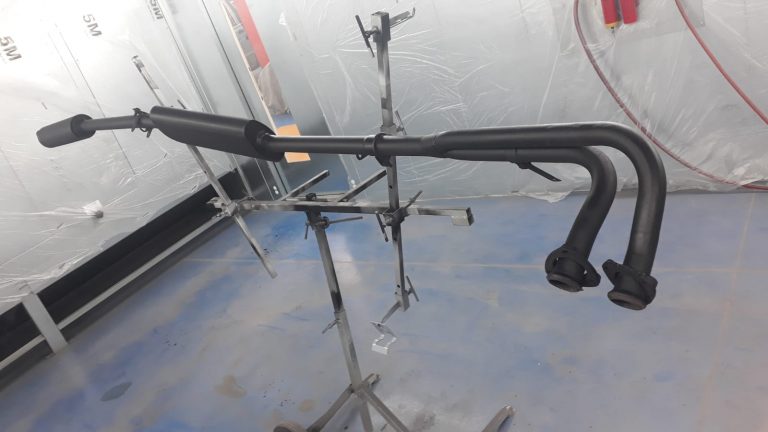
The original exhaust of our 1977 MGBGT is in exceptional condition underneath, just with a little surface rust to deal with. The car has been
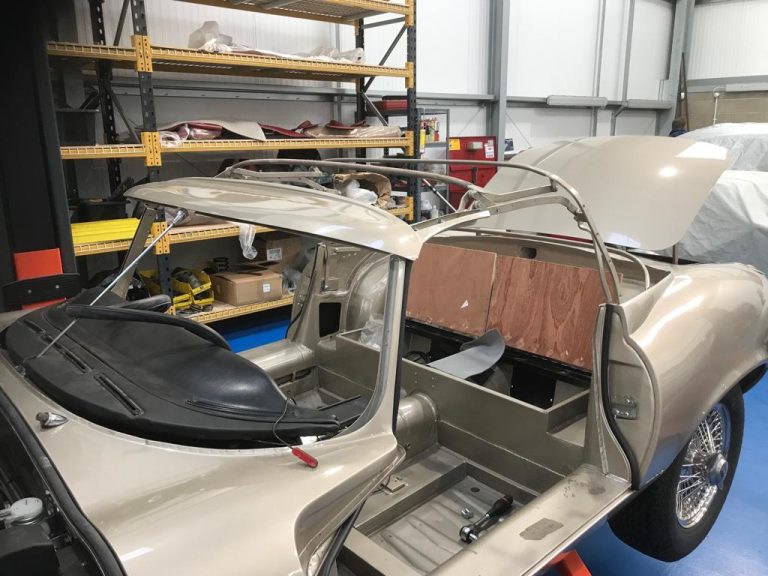
We have fitted up the hood frame to ensure all areas fit as they should before covering with the brand new hood.
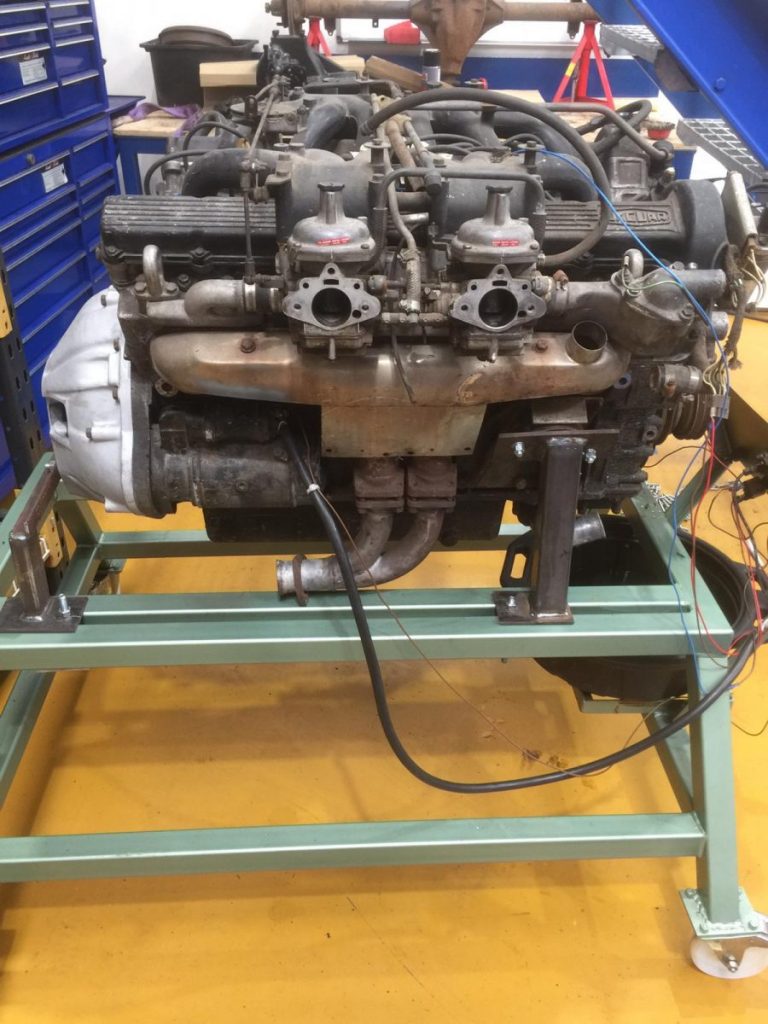
[vc_row][vc_column][vc_column_text]Our 1972 Jaguar E-Type restoration project is now well underway and with the V12 engine loaded on the test bed Ady has managed to get
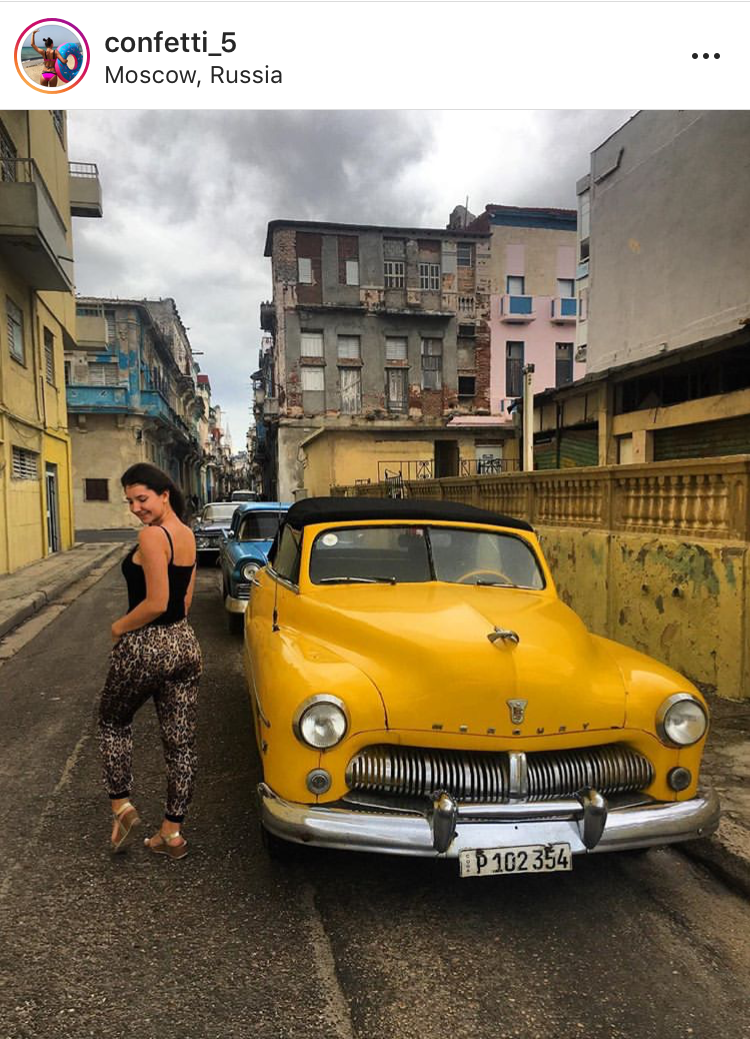
Source: Instagram @Confetti_5 ‘Travel, Beauty, Lifestyle’ – @Confetti_5 seems to live the life that others can only dream of, as she travels the world visiting some
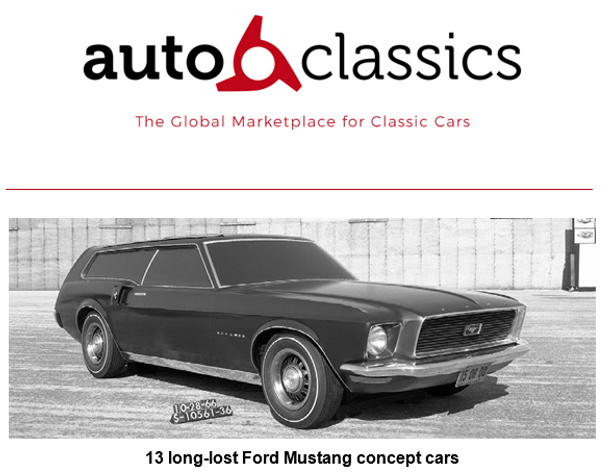
Source: Auto Classics The Ford Mustang has a history spanning five decades, with each generation defining its era. But what about the Mustang concept cars
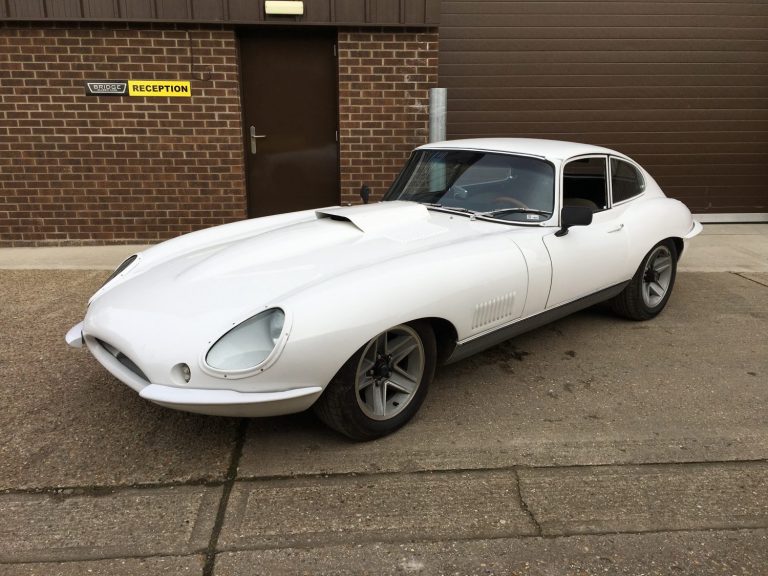
[vc_row][vc_column][vc_column_text]Our 1963 Jaguar E-Type has now arrived in our workshops. Today, it came up from Somerset but having recently arrived in from the US. We
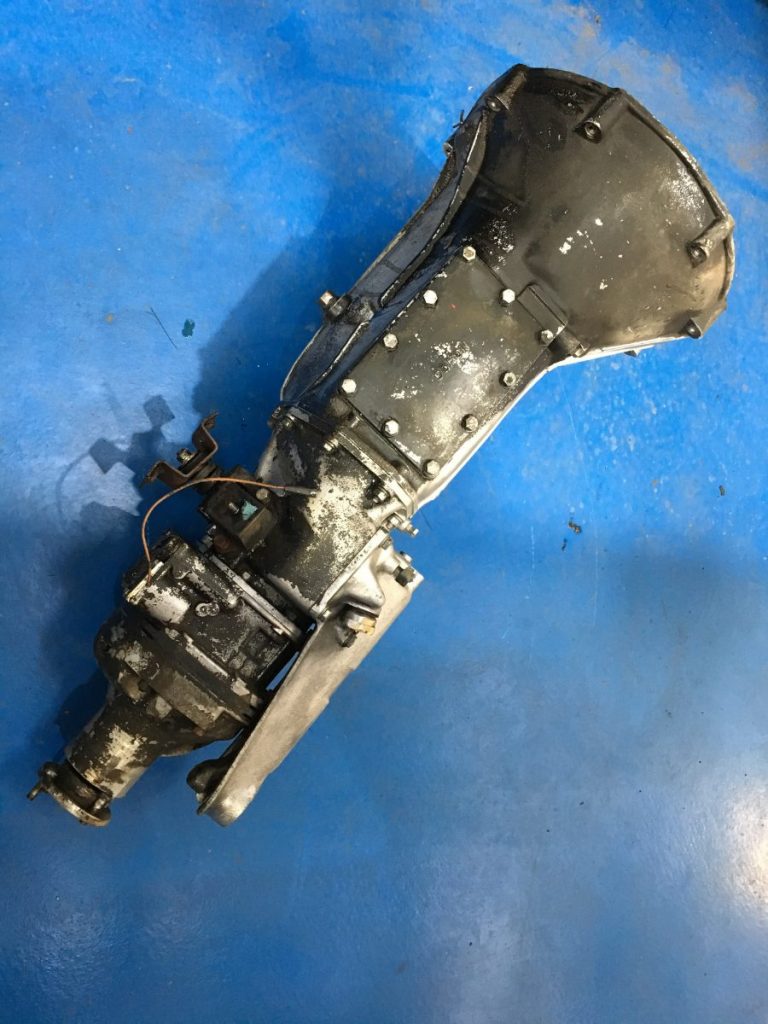
Pete has begun work on cleaning up the original gearbox housing. …and what a difference a good clean has made.
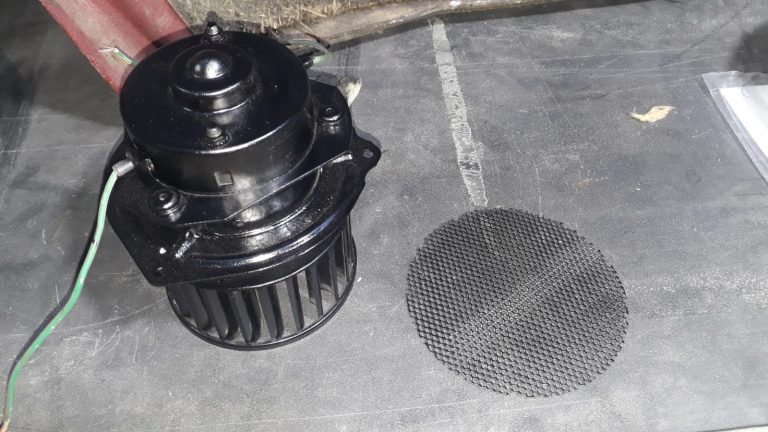
We are now working on the refurbishment of the under-bonnet parts. Brian is busy stripping back the parts to remove any excess surface rust before
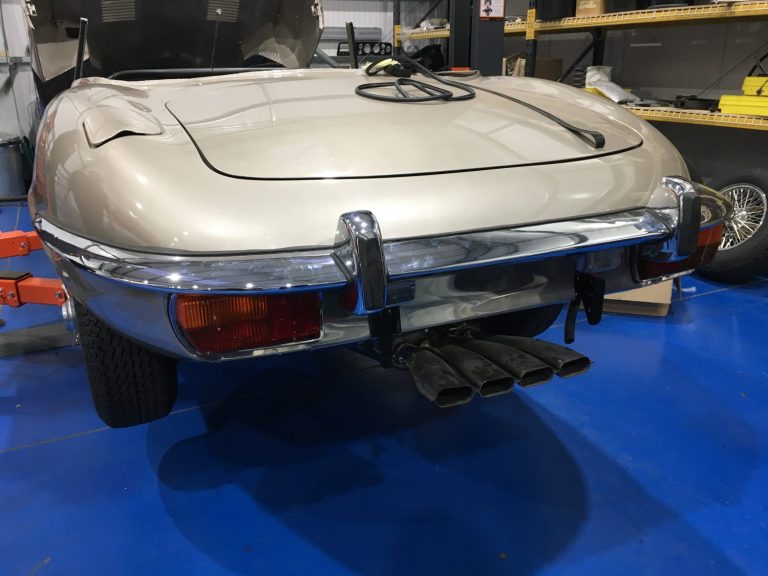
The rear end of our 1971 Jaguar E-Type roadster is now complete. The rubbers have been fitted up around the bumpers, the over riders have
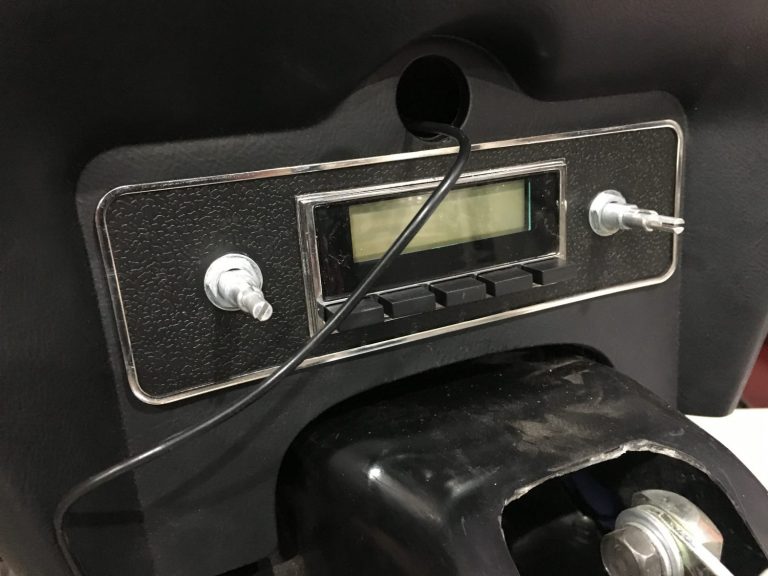
We are now fitting up our 1971 Jaguar E-Type V12 with its new in-car entertainment system. We have kept with the original look installing a
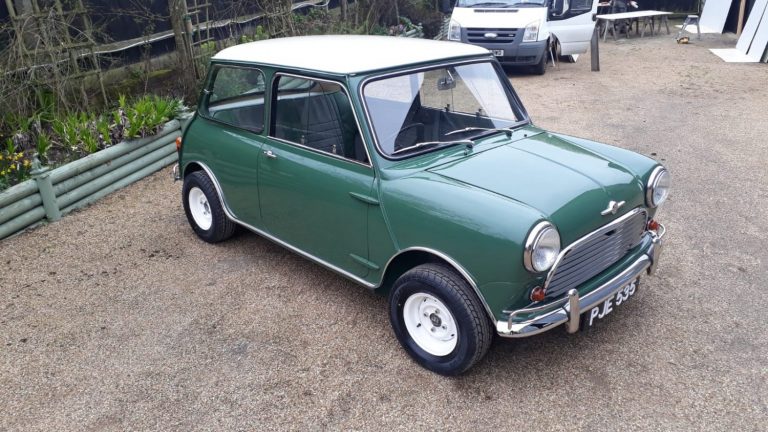
Work is now complete on our 1963 Mini respray. Almond Green: GN37 – ICI Variant Code: 3483 Old English White: WT03 – ICI Variant Code:
[vc_row][vc_column][vc_column_text]We have life in our 1960 Austin Healey engine…[/vc_column_text][/vc_column][/vc_row][vc_row][vc_column][vc_video link=”https://www.youtube.com/watch?v=l1Ljo2o4nxI” align=”center”][/vc_column][/vc_row]

Coming in soon we have our 1956 Ford Consul for a full re-paint.
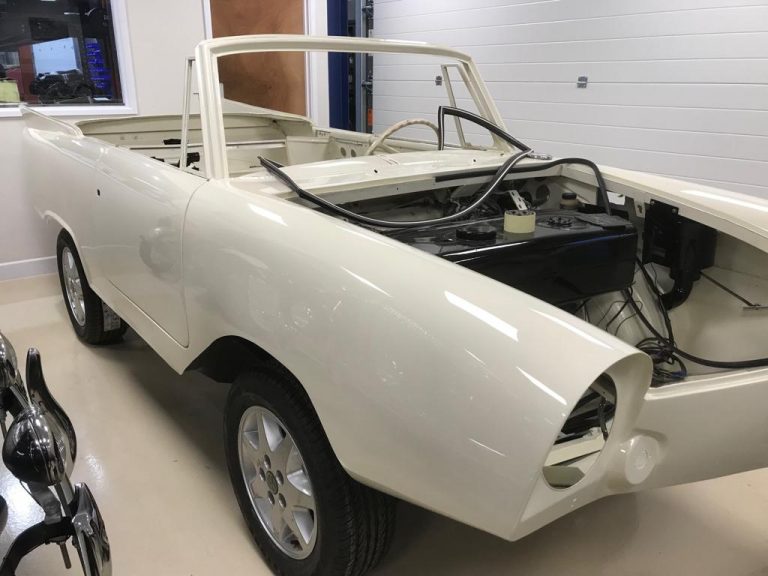
[vc_row][vc_column][vc_column_text]We say this time and time again but if you are restoring (or even working) on your own projects it is so beneficial to take
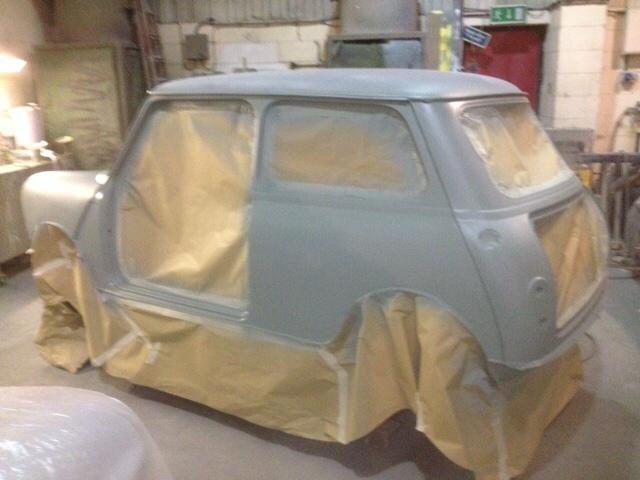
The Almond Green finish is looking now on our 1963 Mini bodyshell as we now head into the final stages of our respray.
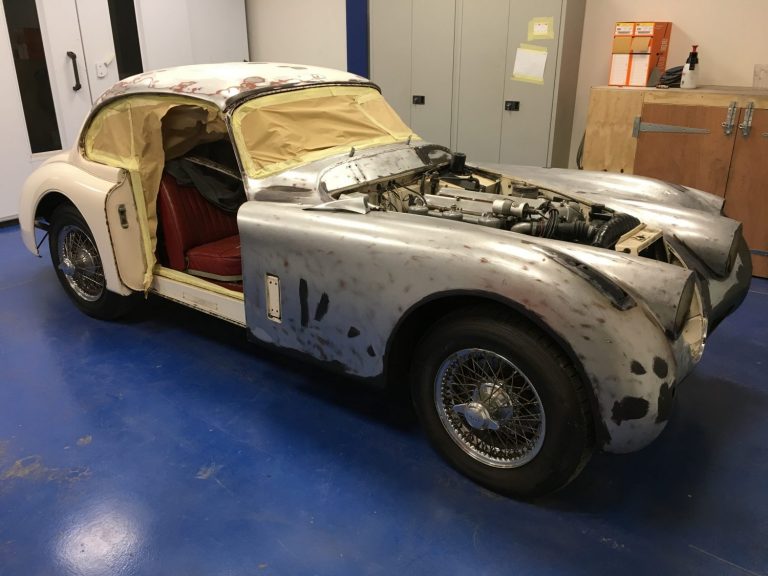
Chris has made more progress on our 1960 Jaguar XK150S body as we prepare for a full external respray. The front wings have been fully
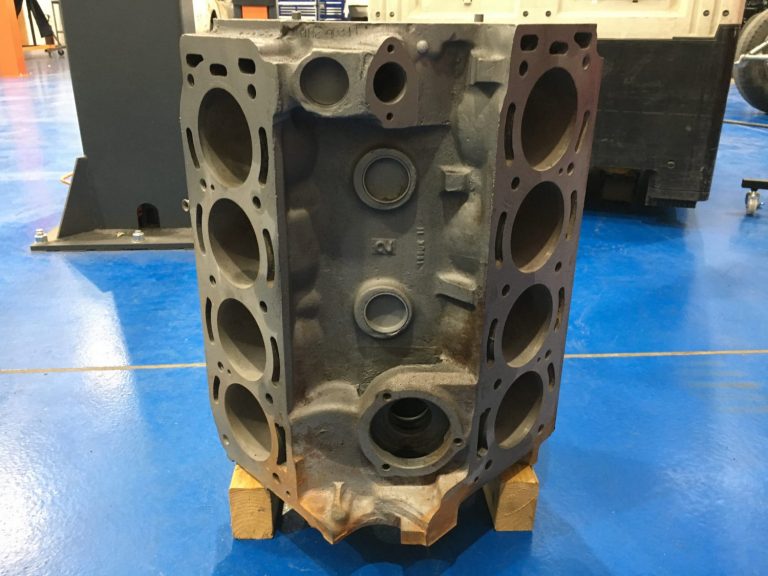
From time to time we like to have a little fun with spare parts we find at Bridge Classic Cars – take the 1967 Jaguar
[vc_row][vc_column][vc_column_text]Our 1960 Austin Healey Frogeye Sprite has now arrived in our Woodbridge workshops, thanks as alwasy to KARR solutions for their brilliant transportation services. [/vc_column_text][/vc_column][/vc_row][vc_row][vc_column][vc_gallery
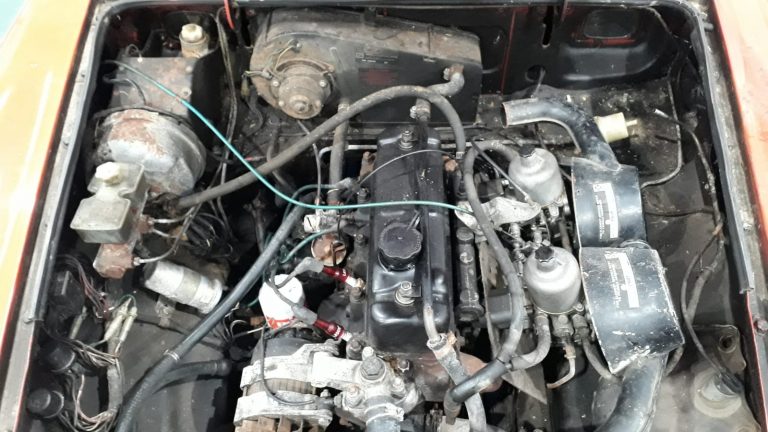
A successful operation, our engine is now out of the car and ready to be recommissioned by Ady. Pete’s efforts can now be concentrated to
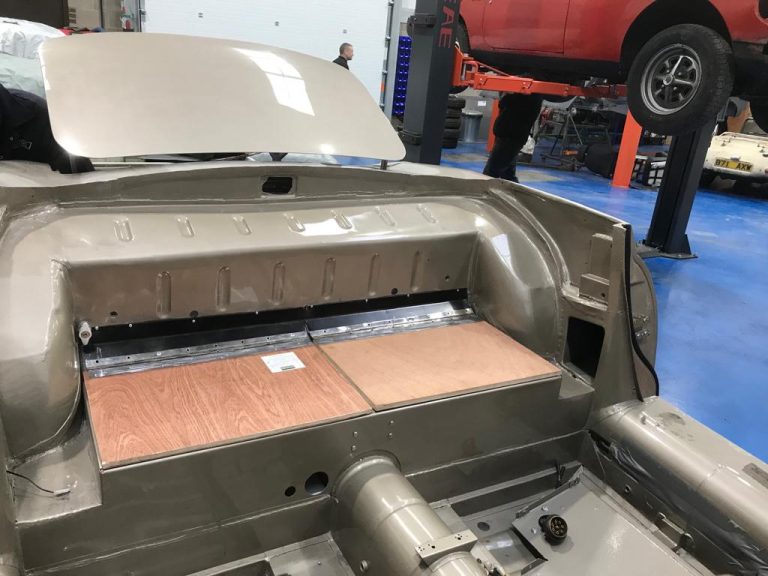
We are currently in the process of manufacturing a bespoke storage compartment in the rear of our Jaguar E-type roadster. The compartment will be hidden
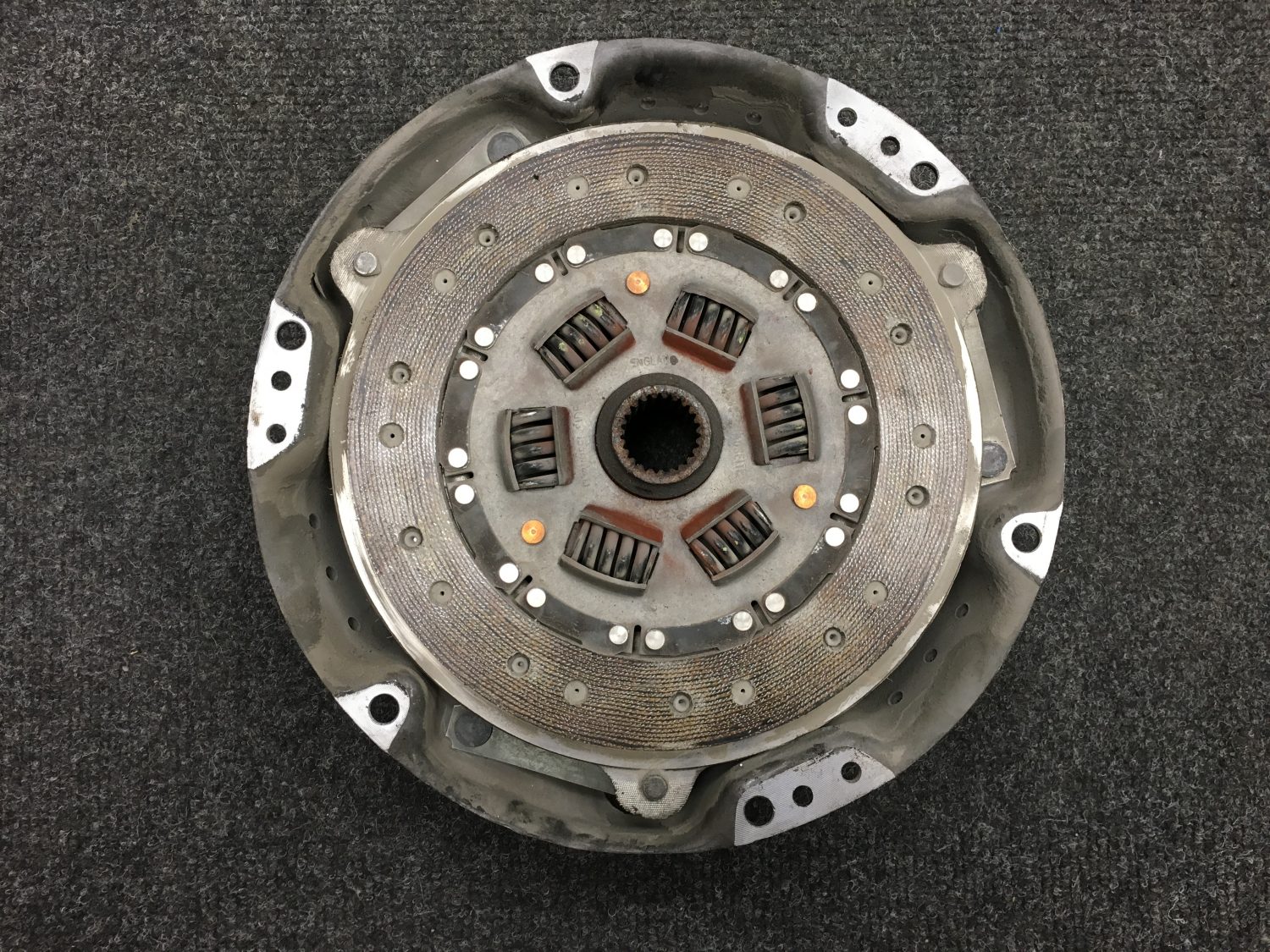
As we expected, our MGBGT’s clutch plate has seized solid to the pressure plate. We recommended fitting a new clutch as part of the project
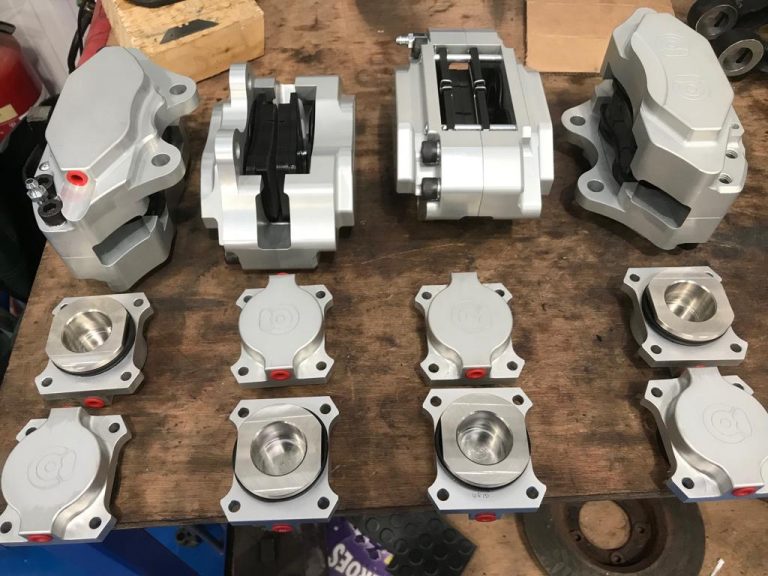
Established in 1991, Coopercraft very quickly earned an excellent reputation for restoring and maintaining classic cars, in particular Jaguars. In the mid 1990′s, with his
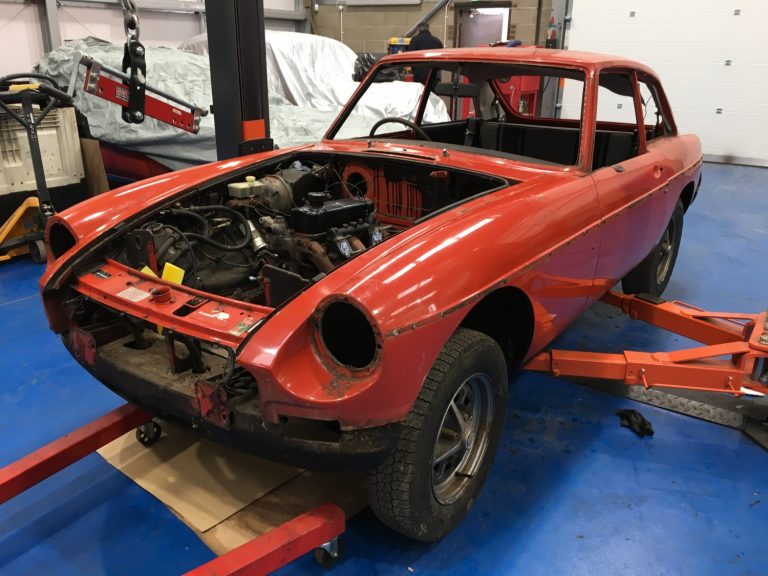
[vc_row][vc_column][vc_column_text]The restoration journey of our 1977 MGBGT is now in full swing with the car being stripped of all external components as well as the
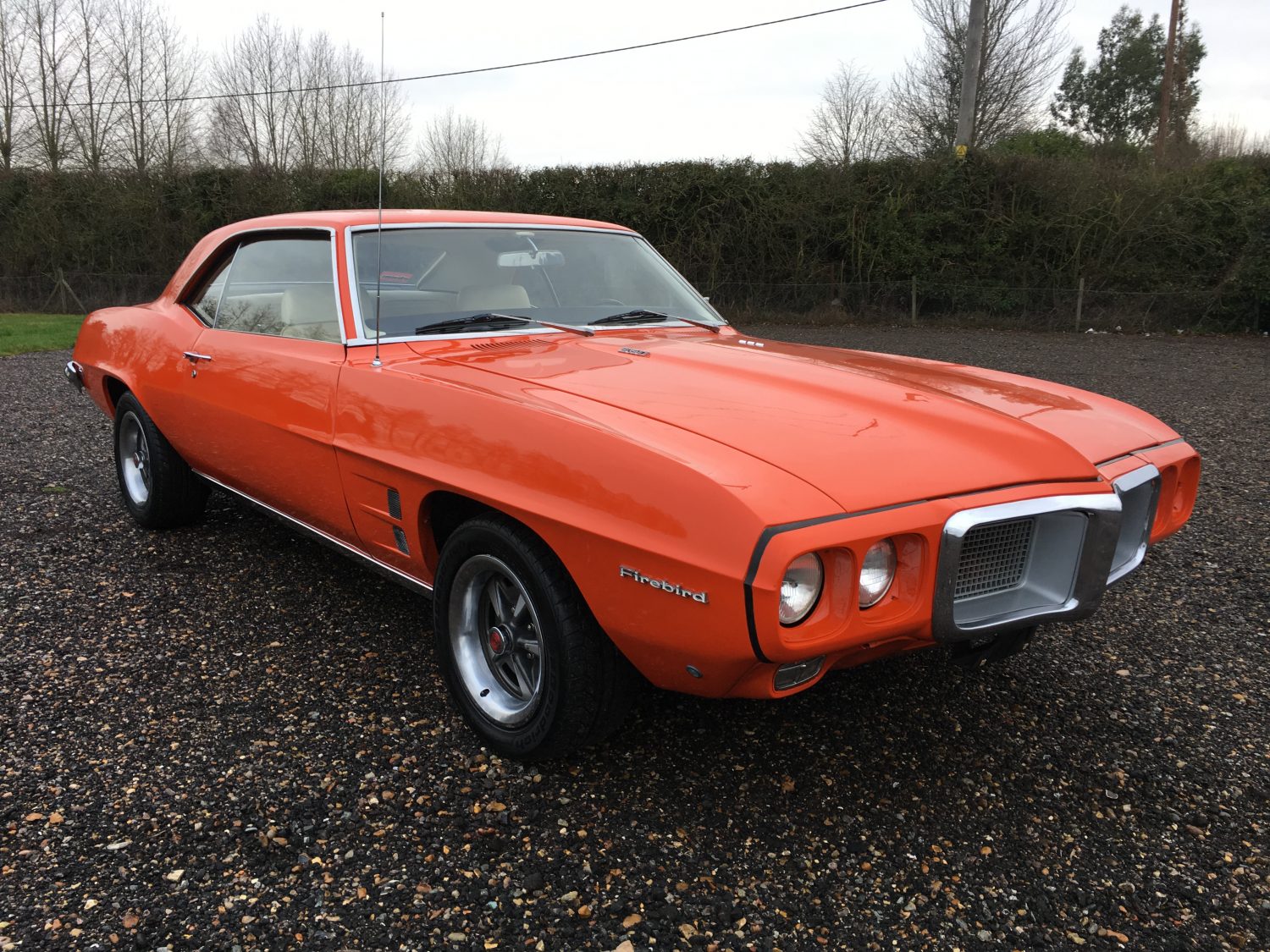
[vc_row][vc_column][vc_column_text]Fresh in the UK from Canada our 1969 Pontiac Firebird is now available for sale. Join us as we walk around the car…[/vc_column_text][/vc_column][/vc_row][vc_row][vc_column][vc_video link=”https://www.youtube.com/watch?v=dxQikH44_Is” align=”center”][/vc_column][/vc_row]
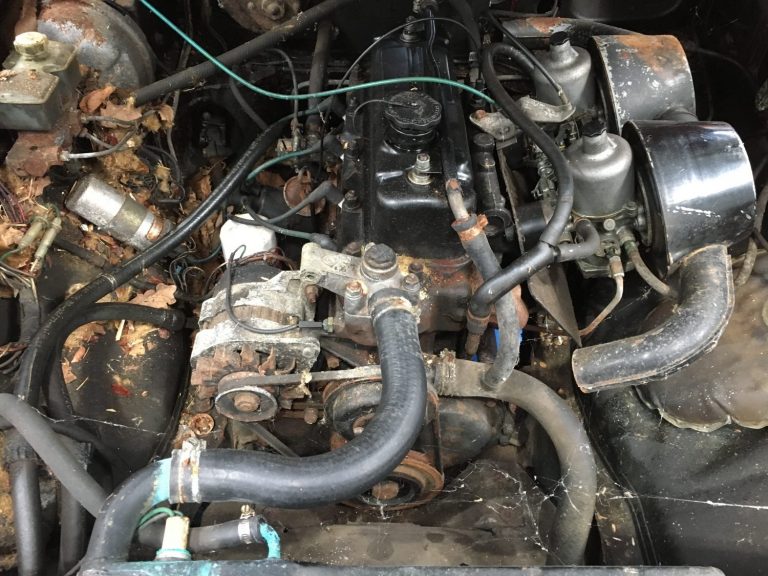
[vc_row][vc_column][vc_column_text]After 30 years of being dry stored and untouched we have successfully brought the engine back to life on our 1977 MG BGT. This is
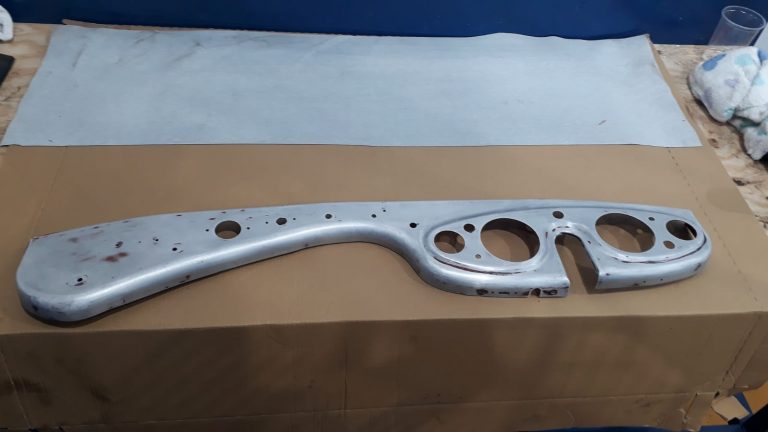
We are now working on refurbishing the dash of our 1955 Austin Healey. The existing covering has been removed and the surface has been cleaned
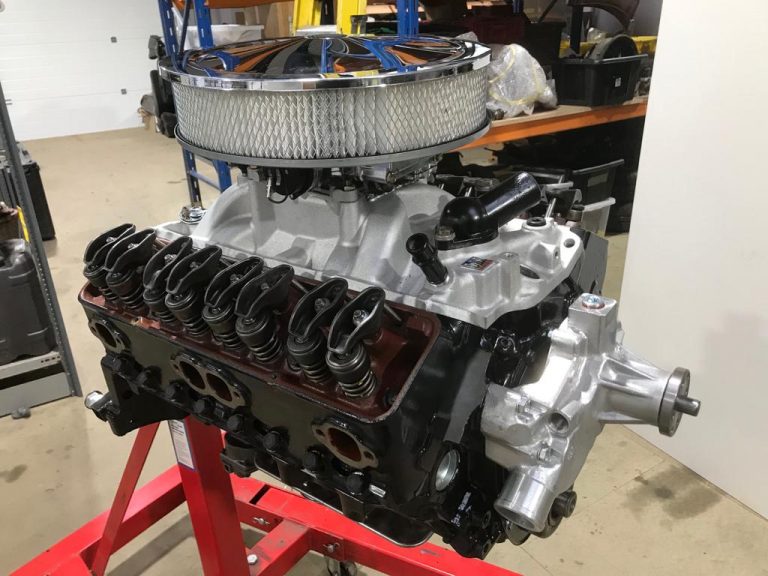
We are progressing very well with our 1957 Jensen 541R’s Corvette engine as we dial in the camshaft. Our engine is having an up rated
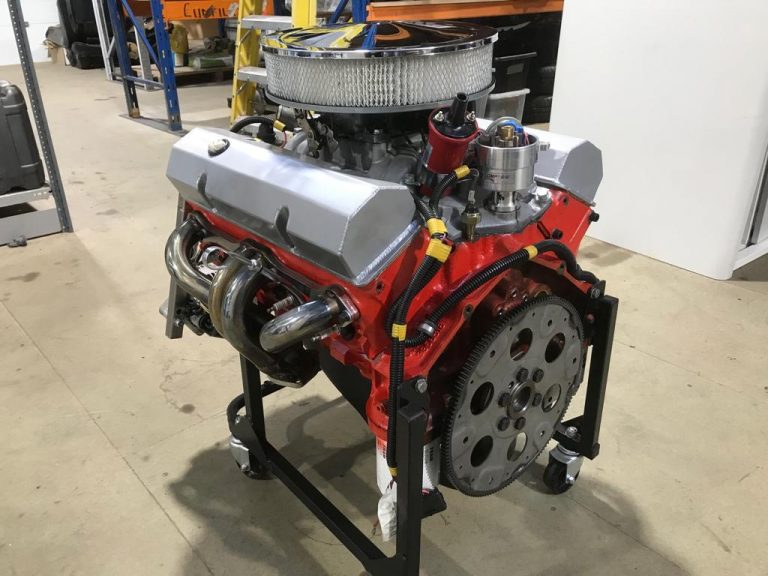
[vc_row][vc_column][vc_column_text]Fully refurbished 355 cid small block Chevrolet engine, originally 5.4 litres. 1969-1970 cylinder block, 327 cid rebored .030″, decks milled .060″, ARP main cap bolts.
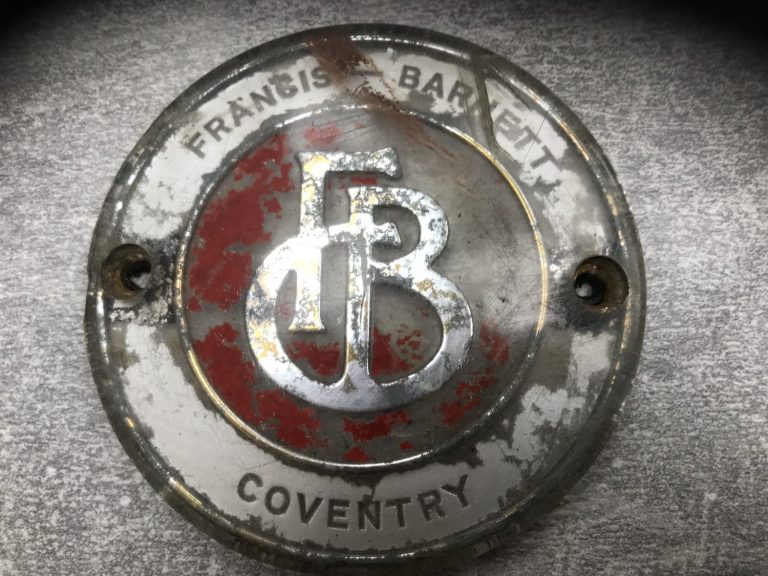
Our original 1961 Francis Barnett badges are now in the hands of our good friends at Pamela David Enamels to be reproduced. Pamela David Enamels was established in
[vc_row][vc_column][vc_column_text]Epoxy primer is used to seal a non-porous finish. It is recommended as the first base coat over any bare steel like on our 1961 Jaguar XK150. These base coats or epoxy primers can be used over fiberglass, plastic or the black iron phosphate coating.
This primer can also be used on cracks and dents. Its bonding capacity is excellent and produces a good surface finish. Epoxy primers not only offer excellent adhesion to metals, but also serve as a proper base for extra undercoat products, top coats and paint.
A two-part epoxy primer contains zinc phosphate, which acts as corrosion-inhibiting pigment. Epoxy primers can be used to waterproof materials that consequently protect the bare metal from oxidation. A dry, very clean surface is needed before applying epoxy primer. Two-part epoxy primer needs to be mixed thoroughly before applying.
Since paints in the automobile and marine industries are very important for resisting corrosion (rusting), epoxy coatings are widely used as primers to improve the adhesion of the metal surface. Epoxy primers are also used in structural steel coatings for high-build thickness with the application of only one or two coats.
A two-part epoxy primer is known as structural steel primer. It needs two components that are cured chemically through cross-linking. This two-part epoxy primer produces a film that is resistant to abrasion, chemicals and moisture. It is very suitable for use on properly prepared steel and concrete. This primer is also recommended for power plants, marine applications, water treatment plants and tank exteriors.
Further advantages of this primer include:
[/vc_column_text][/vc_column][/vc_row][vc_row][vc_column][vc_gallery type=”image_grid” images=”25497,25498,25499,25500,25501,25503,25504,25505,25506,25507,25508,25509,25511,25512″][/vc_column][/vc_row][vc_row][vc_column][vc_column_text]Primers are the most common undercoats used when refinishing car body shells.
They are great for building up and levelling areas or surfaces.
They provide a smooth surface for paint and they are great for adhesion as they provide a strong bond between the sheet metal or old paint and the new paint. Primers are rust resistance so they resist the formation of rust where they adhere to the sheet metal. They are able to fill sanding and grinding marks in old paint, sheet metal and fillers and can be sanded smooth or levelled quickly and easily. They act as a protective barrier to prevent the paint from soaking in and a good high-build primer should be ready to sand in as little as 30 minutes.[/vc_column_text][/vc_column][/vc_row][vc_row][vc_column][vc_gallery type=”image_grid” images=”25514,25515,25516,25517,25518,25519,25520,25521″][/vc_column][/vc_row]
The original exhaust of our 1977 MGBGT is in exceptional condition underneath, just with a little surface rust to deal with.
The car has been owned from new by one person and was stored away in the 80s not to be used again…until now.
With very little use the car has remained in considerably good condition and as the original exhaust has not suffered from the lack of use we have cleaned back and stripped off the surface rust to reveal what’s underneath.
The exhaust has now been primed and coated in our high temperature paint.
We have fitted up the hood frame to ensure all areas fit as they should before covering with the brand new hood.
[vc_row][vc_column][vc_column_text]Our 1972 Jaguar E-Type restoration project is now well underway and with the V12 engine loaded on the test bed Ady has managed to get it up and running and up to temperature.[/vc_column_text][/vc_column][/vc_row][vc_row][vc_column][vc_video link=”https://www.youtube.com/watch?v=0sMVNHb1kFA” align=”center”][/vc_column][/vc_row]
‘Travel, Beauty, Lifestyle’ – @Confetti_5 seems to live the life that others can only dream of, as she travels the world visiting some of the world’s most beautiful places.
Her daily occurrences are followed by over 25,700 followers.
…and we love the fact she has a passion for her classic cars!
Her latest venture has taken her to Havana, Cuba and standing beside a classic Ford Mercury.
The Ford Mustang has a history spanning five decades, with each generation defining its era. But what about the Mustang concept cars that never made it to production?
Amazing find, check out the full article at AutoClassics
[vc_row][vc_column][vc_column_text]Our 1963 Jaguar E-Type has now arrived in our workshops. Today, it came up from Somerset but having recently arrived in from the US.
We are looking to carry out a full restoration on the vehicle to transform her back into the original 1963 model that would have left the factory but we will have a better idea once we have fully assessed the vehicle.
The engine runs fine but we have already established an issue with the carbs that will certainly need address.
The car will head into our workshops this afternoon to be checked over and under so we can get a better idea of what work will be required.[/vc_column_text][/vc_column][/vc_row][vc_row][vc_column][vc_gallery type=”image_grid” images=”25416,25417,25418,25419,25420,25421,25422,25423,25424,25425,25426,25427,25428,25429″][/vc_column][/vc_row]
Pete has begun work on cleaning up the original gearbox housing.
…and what a difference a good clean has made.
We are now working on the refurbishment of the under-bonnet parts. Brian is busy stripping back the parts to remove any excess surface rust before re-painting in Simoniz VHT Black.
“Simoniz has been around for over 100 years and with all this experience, we understand paint. Guaranteed to get pretty much any job done, Simoniz has a range of best selling paints which can be used to refinish or protect just about anything…bodywork, wheels, engines, roof racks, scaffolding, pallets, BBQs and much more.
Need a high temperature paint that protects, then look no further than this specially formulated VHT paint. For use on parts such as exhausts and manifolds that are subject to intense heat, this paint is guaranteed to protect up to 800’C. Can be used on brake calipers, BBQs and more. Other colour also available; Blue, Red and Silver. N.B. temperature varies depending on colour.”
The rear end of our 1971 Jaguar E-Type roadster is now complete. The rubbers have been fitted up around the bumpers, the over riders have also been added so now we can move forward to concentrate on the bespoke storage compartment we are manufacturing.
We are now fitting up our 1971 Jaguar E-Type V12 with its new in-car entertainment system.
We have kept with the original look installing a retro fascia but with amazing capabilities. Our Autosound set up comes complete with all of the latest technologies, RDS FM, DAB, DAB+, iPhone, Bluetooth music streaming, Bluetooth hands free calling and much more…
Full specification also includes; rear USB input, rear Phono aux input, subwoofer output, amplifier output, iPhone and iPOD compatible (earlier 32pin iPods will play but not charge), DIN-D size, 4 x 45 watts output, ISO connector, 12V negative earth, Non volatile memory – retains radio memory presets even when all power is disconnected.
As well as this, the car will house four hidden speakers to create a full surround sound effect. The rear speakers will be hidden behind the rear side panels and the fronts will be under the front foot well.
We are also installing two addition USB charging points in the front and within our specially designed rear compartment will be power to operate any additional external devices: refrigeration, tablet devices, lighting etc.
Work is now complete on our 1963 Mini respray.
Almond Green: GN37 – ICI Variant Code: 3483
Old English White: WT03 – ICI Variant Code: 2379
Images of the car, now rebuilt.
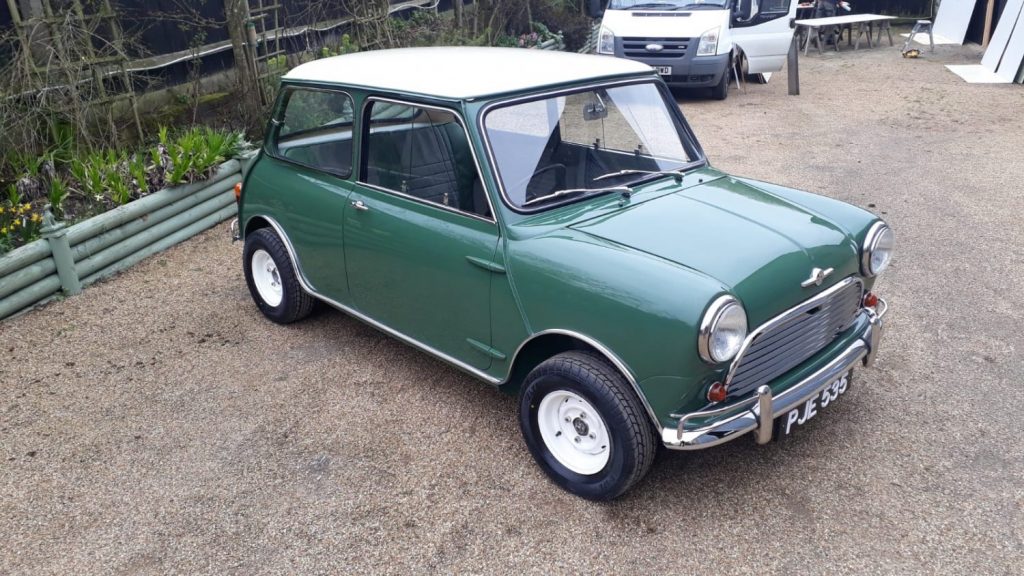
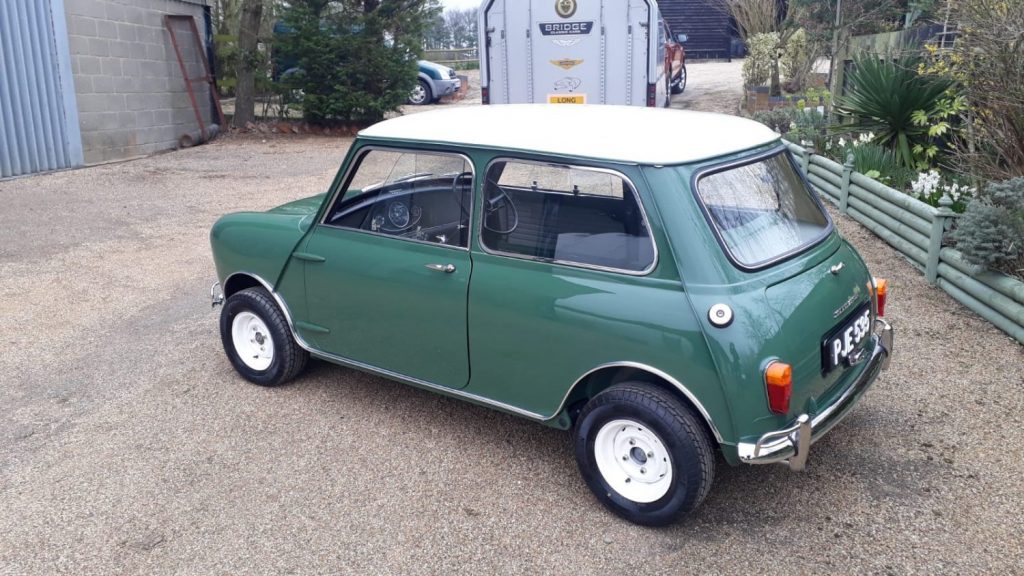
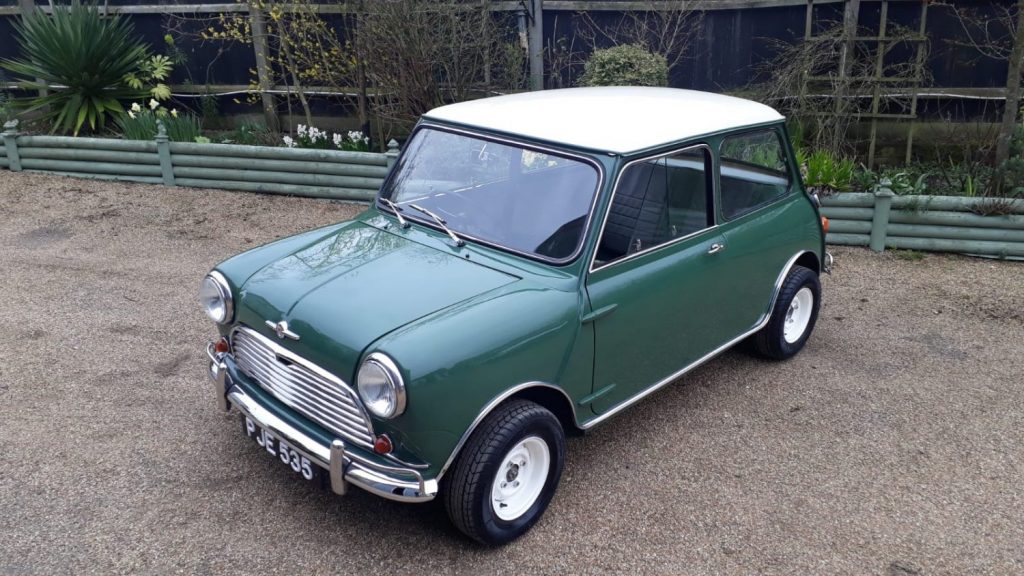
[vc_row][vc_column][vc_column_text]We have life in our 1960 Austin Healey engine…[/vc_column_text][/vc_column][/vc_row][vc_row][vc_column][vc_video link=”https://www.youtube.com/watch?v=l1Ljo2o4nxI” align=”center”][/vc_column][/vc_row]
Coming in soon we have our 1956 Ford Consul for a full re-paint.
[vc_row][vc_column][vc_column_text]We say this time and time again but if you are restoring (or even working) on your own projects it is so beneficial to take lots of photos. At the time, it may seem like a fruitless exercise but months down the line when it is time to rebuild what you have taken apart you may find these photographs a life saver.
Here are more images of our 1965 Amphicar.[/vc_column_text][/vc_column][/vc_row][vc_row][vc_column][vc_gallery type=”image_grid” images=”25389,25390,25391,25392,25393,25394,25395,25396,25397,25398,25399,25400,25401,25402,25403,25404,25405,25406,25407,25408,25409,25410,25411,25412,25413″][/vc_column][/vc_row]
The Almond Green finish is looking now on our 1963 Mini bodyshell as we now head into the final stages of our respray.
Chris has made more progress on our 1960 Jaguar XK150S body as we prepare for a full external respray. The front wings have been fully stripped of existing paint as have the doors, boot lid and bonnet.
The doors, boot lid and bonnet have also been primed and are now waiting for paint when the rest of the car is ready.
We should hopefully be in a position next week where the rest of the car is stripped of existing paint and we can then look at priming the body shell ready for paint.
From time to time we like to have a little fun with spare parts we find at Bridge Classic Cars – take the 1967 Jaguar E-Type sofa.
We are currently working on something different with our 1978 Triumph Stag V8 engine block.
Designs are yet to be finalised but for now, we have media blasted the block to remove all excess dirt and debris…
[vc_row][vc_column][vc_column_text]Our 1960 Austin Healey Frogeye Sprite has now arrived in our Woodbridge workshops, thanks as alwasy to KARR solutions for their brilliant transportation services.
[/vc_column_text][/vc_column][/vc_row][vc_row][vc_column][vc_gallery type=”image_grid” images=”25220,25221,25222,25223,25224,25225″][/vc_column][/vc_row][vc_row][vc_column][vc_column_text]Having organised all of the parts, components and boxes we now have a better understanding of just how complete the car actually is and now we can get on with the task at hand.
One of our first tasks will be to see whether the engine is free and whether we can get her running.[/vc_column_text][/vc_column][/vc_row][vc_row][vc_column][vc_gallery type=”image_grid” images=”25193,25192,25191,25190,25189,25188,25187,25186,25185,25184,25183,25182,25181,25180,25179,25178,25177,25176,25175″][/vc_column][/vc_row]
A successful operation, our engine is now out of the car and ready to be recommissioned by Ady.
Pete’s efforts can now be concentrated to the engine bay area as he now has more space to strip, clean and improve the area, to make it look lovely once again.
We are currently in the process of manufacturing a bespoke storage compartment in the rear of our Jaguar E-type roadster.
The compartment will be hidden by a lid that will be finished in the style of the front seats.
It will be fully lined and have power facilities built in.
The manufacturing process has now begun, the lids have been made up and we are now waiting on the arrival of our leather so we can start to piece it all together.
Here are some more pictures of the car in position…
As we expected, our MGBGT’s clutch plate has seized solid to the pressure plate.
We recommended fitting a new clutch as part of the project and now, having found this issue, we a glad that this part of the plan.
Established in 1991, Coopercraft very quickly earned an excellent reputation for restoring and maintaining classic cars, in particular Jaguars.
In the mid 1990′s, with his life long passion and expertise for all things Jaguar, including preparing and racing his Jaguar 420 with great success, Peter Cooper was conscious that the braking performance of these classics was inadequate for modern-day use. This led to the design and development of specially manufactured uprated braking systems for Jaguars and other marques.
Coopercraft pioneered this concept and continue to be market leaders with a quality product which is endorsed worldwide.
It was Jaguar in the 1950′s who introduced the disc brake system, stealing a march on the competition at Le Mans where they enjoyed a superiority over formidable opposition to win this historic race in 1953 with the C type, following this with a hat trick of wins in 1955, ’56 and ’57. 40 years on and the link between Jaguar, disc brakes and racing proved to be the catalyst which has led to many safer Jaguars and other classics being enjoyed by their discerning owners, across the globe!
Now known as Coopercraft International the business is owned and managed by Peter and Debbie Cooper, who continue to research, develop and produce new products to add to their popular range of uprated braking products. We offer a full fitting service in conjunction with our classic maintenance and competition preparation.
This brake kit has been designed to replace the original Dunlop cylinder assemblies, easily fitted to the original carriers and retaining your original handbrake mechanism. The cylinders incorporate a modern style seal and piston and are designed to work in conjunction with our uprated front brake kits.
They are available in steel with a smart zinc plated finish and stainless steel pistons, also available as anodised billet aluminium cylinders and pistons for competition use, complete with a set of pads.
Braided stainless steel brake hoses and higher friction brake pads are also available to further increase the performance levels.
These kits will be fitted to both our 1960 and 1957 Jensen 541R projects.
[vc_row][vc_column][vc_column_text]The restoration journey of our 1977 MGBGT is now in full swing with the car being stripped of all external components as well as the interior.
Having been dry stored for 30 years the majority of the car is very solid so other than the obvious places there are not too many major tasks to carry out to prepare the body for paint.
[/vc_column_text][/vc_column][/vc_row][vc_row][vc_column][vc_gallery type=”image_grid” images=”25205,25206,25207,25208,25209,25210,25211,25212,25213,25214,25215,25216,25204,25203,25202,25201,25200,25199,25198,25197,25196,25195″][/vc_column][/vc_row]
[vc_row][vc_column][vc_column_text]Fresh in the UK from Canada our 1969 Pontiac Firebird is now available for sale. Join us as we walk around the car…[/vc_column_text][/vc_column][/vc_row][vc_row][vc_column][vc_video link=”https://www.youtube.com/watch?v=dxQikH44_Is” align=”center”][/vc_column][/vc_row]
[vc_row][vc_column][vc_column_text]After 30 years of being dry stored and untouched we have successfully brought the engine back to life on our 1977 MG BGT.
This is fantastic news to begin our restoration journey but we still have a long way to go. The engine can now be worked on with the knowledge that it has successfully been run up.[/vc_column_text][/vc_column][/vc_row][vc_row][vc_column][vc_video link=”https://www.youtube.com/watch?v=_TlIhCDs2Tc” align=”center”][/vc_column][/vc_row]
We are now working on refurbishing the dash of our 1955 Austin Healey. The existing covering has been removed and the surface has been cleaned up.
We have now re-covered the dash in brand new vinyl and high temperature auto adhesive.
We are progressing very well with our 1957 Jensen 541R’s Corvette engine as we dial in the camshaft. Our engine is having an up rated camshaft fitted so Ady is currently working on rebuilding with the new upgraded specifications.
Here we are adjusting the valve timing.
[vc_row][vc_column][vc_column_text]Fully refurbished 355 cid small block Chevrolet engine, originally 5.4 litres.
1969-1970 cylinder block, 327 cid rebored .030″, decks milled .060″, ARP main cap bolts.
Cylinder heads “041” castings, unleaded exhaust valve seats, bronze guide liners.
Uprated oil pump, pickup, drive shaft.
Sump modified with windage screen and crank scraper, debris magnets.
Oil galleries and drainbacks enlarged and smoothed, oil jets added to timing gears and distributor gears.
Lightweight Corvette water pump, chrome pulley, brass core plugs.
Small diameter crank damper, ally pulley, flex plate with ARP bolts.
Eagle crankshaft, Eagle connecting rods, APR bolts, longer stroke giving 355 cid , 5.8 litres.
Keith Black Hypereutectic pistons, uprated rings, Cloyes True-Roller timing set.
Chevy L-79 camshaft (classic cam for this build), uprated cam followers and pushrods.
Rocker studs uprated to threaded items, high ratio rocker arms, Comp Cams valve springs, keepers, collets.
Manley stainless steel valves, exhaust valves increased to 1.60″, valve pockets gas flowed.
Uprated rocker covers, timing cover, fasteners, timing tab, breather and oil cap, stainless exhaust headers.
Lightweight uprated starter and alternator, Mallory billet distributor, MSD ignition and coil, 8mm plug leads.
New engine wiring loom, refurbished Edelbrock carburettor and inlet manifold (modified with plenum divider).
Estimated torque 380 lb.ft. at 3,800 rpm, bhp 360 bhp at 5,400.[/vc_column_text][/vc_column][/vc_row][vc_row][vc_column][vc_gallery type=”image_grid” images=”25033,25032,25031,25030,25029,25028,25027″][/vc_column][/vc_row]
Our original 1961 Francis Barnett badges are now in the hands of our good friends at Pamela David Enamels to be reproduced.
Pamela David Enamels was established in 1971 as family-run business. It has been the only one to specialise in the complete restoration and manufacture of one-off glass enamelled badges to original specifications using traditional glass enamels. Over our many years of unique experience they have developed working techniques which enable them to carry out every step of the involved process in-house. With satisfied clients all around the world their records show that three people from two generations of the family have restored over 15,000 badges and manufactured over 10,000 new badges as one-offs or small quantity batches. These new badges are usually to replace missing emblems which are no longer manufactured but can also be to clients’ own designs.
Bridge Classic Cars are award winning Classic Car Restoration and Maintenance specialists. Your pride and joy is in safe hands with our expert Classic Car Technicians. Take a look at our awards here.